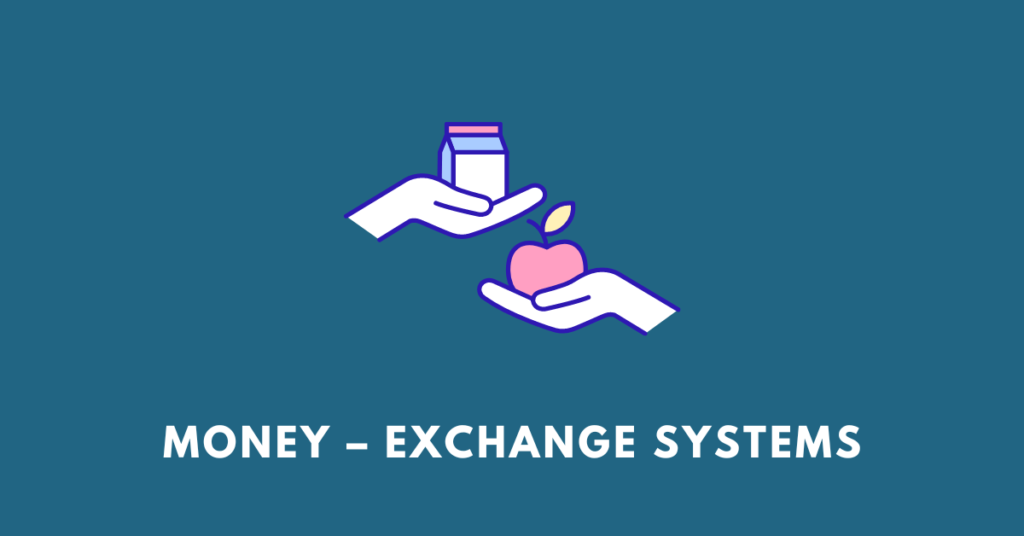Get summary, textual answers, solutions, notes, extras, MCQs, PDF of NBSE Class 9 Financial Literacy unit 2 Money – Exchange Systems. However, the educational materials should only be used for reference, and students are encouraged to make necessary changes.
Summary
The chapter provides an overview of the evolution and role of money as a medium of exchange in human societies. It begins by explaining how early civilizations did not use money. Instead, they engaged in barter, exchanging goods and services directly. However, this system became impractical as societies grew and people began to specialise in different areas of production. Specialisation increased the need for trade, but bartering had limitations, such as difficulty in determining equal value for goods and the problem of not always needing what others offered.
To solve these issues, commodity money was introduced. People used basic items like salt, tea, and cattle as money, but these too had problems. Commodities were often heavy, hard to store, or perishable. This led to the development of metal coins, which were easier to handle. Metal coins were first used around 5000 BC, and by 700 BC, they became more widespread, with countries minting their own coins.
Paper money followed, first appearing in China around AD 806. Despite being used in China for centuries, paper currency didn’t spread to Europe until much later. Today, modern currencies, including coins and paper money, are the standard. Each country has its own currency, such as the Indian Rupee or the US Dollar.
Money plays three key roles in an economy: it is a medium of exchange, a standard of value, and a store of value. For something to serve as money, it must be durable, scarce, easy to transport, divisible, and widely accepted.
Textual MCQs
1. People in early civilization were too busy worrying about
A. Survival
B. Savings
C. Education
Answer: A. Survival
2. Specialization means people become
A. Hard working
B. More skilled
C. More intelligent
Answer: B. More skilled
3. In our early history, the degree of division of labour was
A. Plenty
B. Limited
C. Not found
Answer: B. Limited
4. ______ is one of the difficulties in using commodities as money.
A. Hard to carry
B. Measuring
C. Conversion
Answer: A. Hard to carry
5. Metal objects in different forms and shapes were introduced as money many years ago probably around
A. 2000 BC
B. 4000 BC
C. 5000 BC
Answer: C. 5000 BC
6. Which of the following is one of the characteristics of money?
A. Easily reproducible by people
B. Unlimited value
C. Divisible into usable quantities
Answer: C. Divisible into usable quantities
Extra/additional MCQs
1. When were metal coins introduced as money?
A. 2000 BC
B. 3000 BC
C. 5000 BC
D. 700 BC
Answer: D. 700 BC
9. What was one of the problems with the barter system?
A. It required no trade
B. It was difficult to agree on the value of goods
C. It did not require any goods
D. It only worked with gold
Answer: B. It was difficult to agree on the value of goods

Get notes of other boards, classes, and subjects
